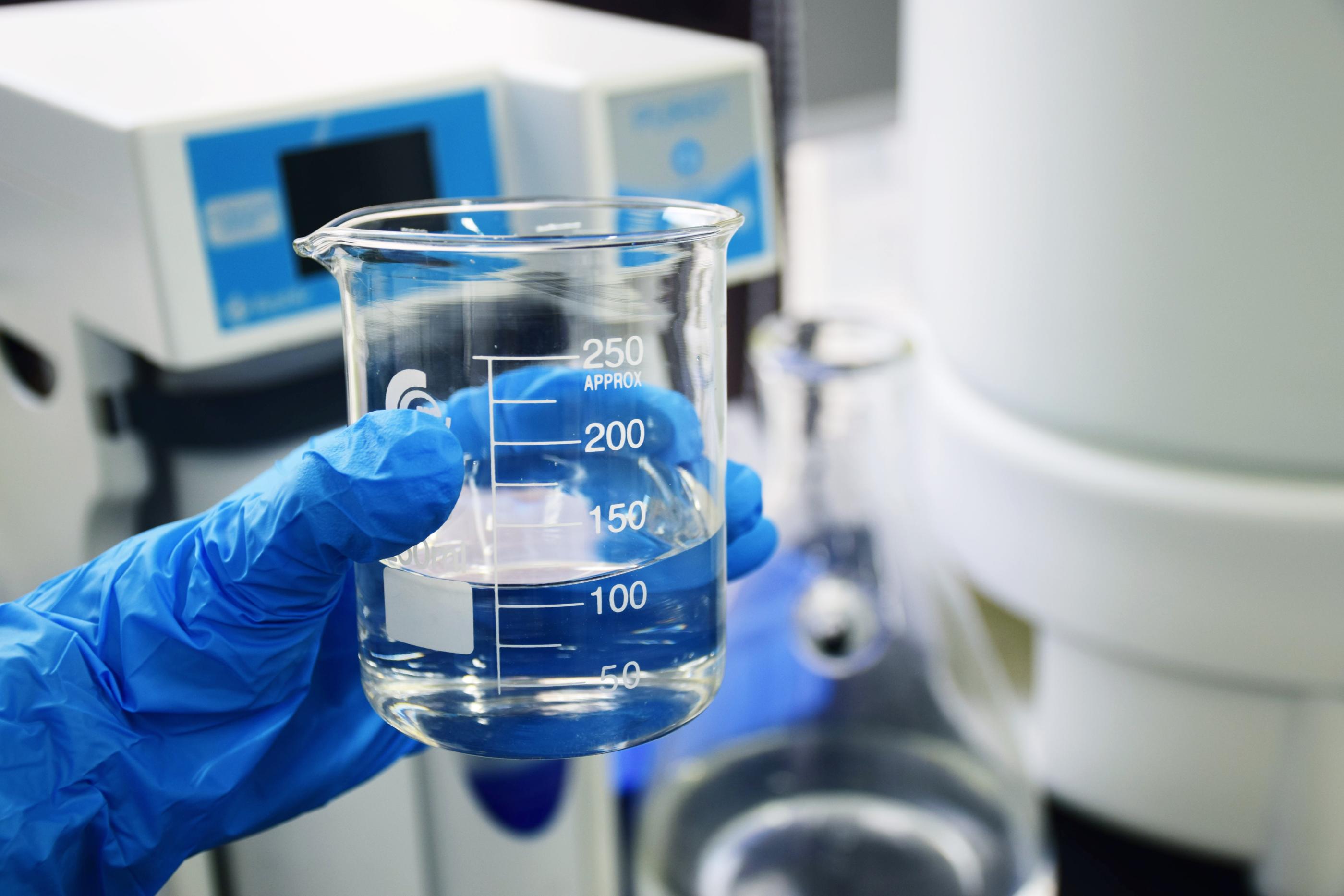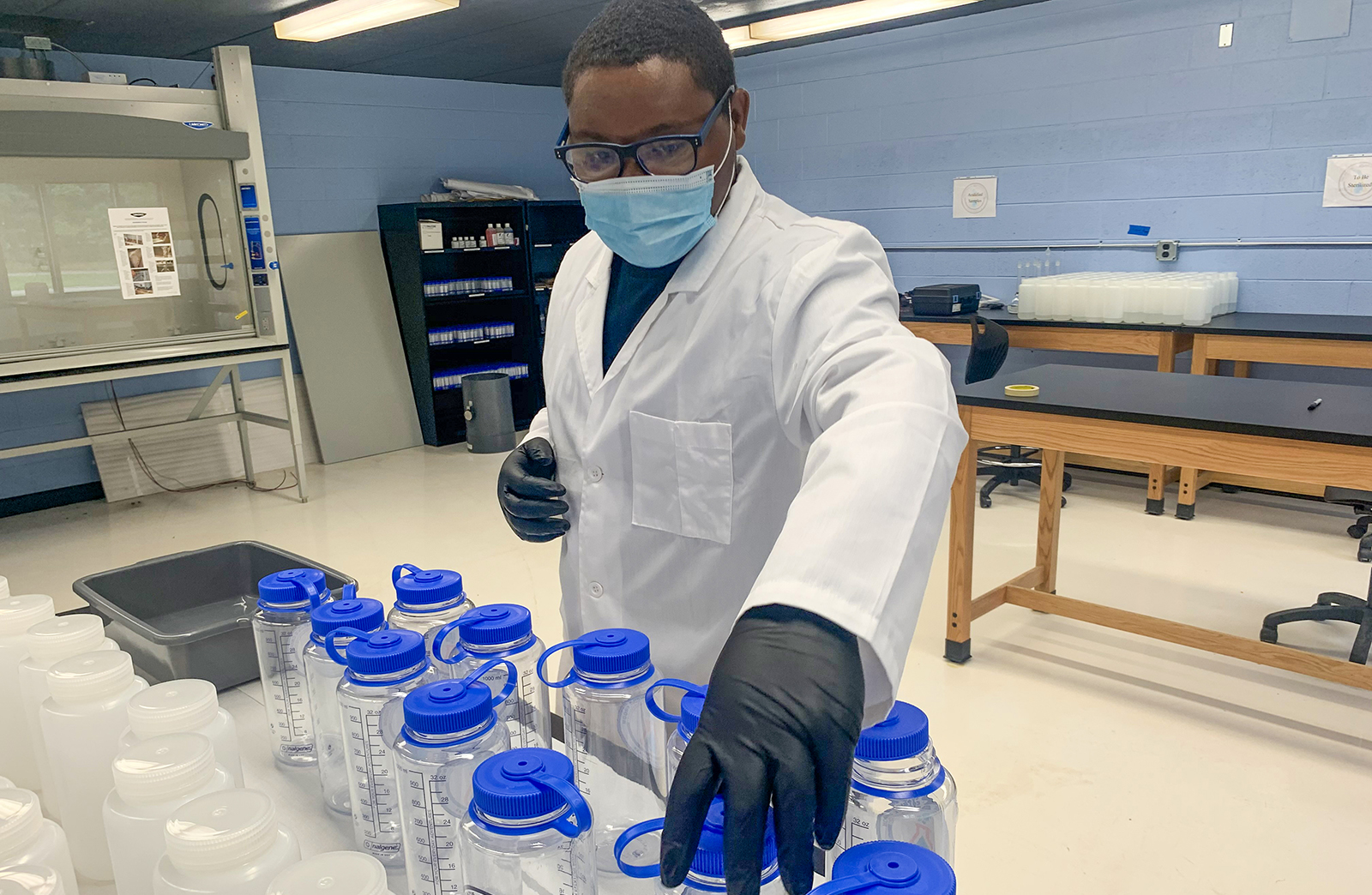Find Trusted Water Testing Services Near Me for Clean Drinking Water
Find Trusted Water Testing Services Near Me for Clean Drinking Water
Blog Article
Discover What Is Included in Water Examining and Exactly How It Makes Certain Safe Drinking Water
Understanding the complexities of water testing is essential in guaranteeing the high quality and safety of our drinking water. Via a meticulous assessment of physical, chemical, and microbiological aspects, water screening recognizes potential contaminants that can posture health threats. From the visibility of hefty metals to unsafe microbes, each examination part plays a crucial role in preserving the stability of our supply of water. Advanced methods like chromatography and spectrometry boost the precision of these analyses. Yet, exactly how do these procedures translate right into the regulatory structures that guarantee security in our daily consumption?
Key Components of Water Screening
Water testing is an important process that entails several vital elements to make certain the safety and high quality of alcohol consumption water. Additionally, making sure the pH equilibrium of water is necessary, as it influences the water's corrosiveness and the efficacy of sanitation procedures.
Another substantial element involves microbiological analysis, where water samples are analyzed for the existence of microbes such as microorganisms, viruses, and protozoa. This evaluation is essential to recognize organic risks that can present health and wellness risks if eaten. Chemical analyses are performed to find not natural and natural compounds, such as hefty metals, nitrates, and chemicals, that may be present in the water supply.

Identifying Unsafe Pollutants
Identifying unsafe pollutants in alcohol consumption water is a basic facet of guarding public wellness. This procedure includes identifying prospective dangers that can jeopardize the high quality and safety and security of water materials. Contaminants can range from microbes such as bacteria, viruses, and protozoa, to inorganic compounds like lead, arsenic, and nitrates, as well as organic toxins including pesticides and industrial chemicals. Each kind of impurity postures distinctive wellness dangers, making their discovery critical to ensure the water eaten by the public is secure.
Water screening for impurities is usually conducted by governing agencies and water utilities, employing a mix of area sampling and lab evaluation. These analyses are developed to identify both normally taking place materials and anthropogenic pollutants that may have gotten in the water via agricultural runoff, commercial discharge, or aging infrastructure. Routine monitoring is important, as contamination levels can change as a result of ecological adjustments, seasonal variations, or human activities.
The identification of hazardous pollutants educates needed actions, such as water therapy interventions or public advisories, to minimize threats. Early discovery is essential to protect against damaging health effects, ranging from stomach illnesses to lasting conditions like cancer cells, therefore ensuring the proceeded safety and security of drinking water.

Chemical Evaluation Strategies
In the realm of guaranteeing risk-free drinking water, chemical analysis strategies play an essential duty in determining and evaluating impurities. These techniques are crucial for spotting a wide array of chemical materials, consisting of hefty metals, chemicals, and industrial pollutants, which can pose substantial wellness threats. Methods such as atomic absorption spectroscopy (AAS) and inductively combined plasma mass spectrometry (ICP-MS) are commonly employed to determine trace levels of steels like lead, arsenic, and mercury. These tools give specific metrology, assisting in compliance with regulative standards.
Gas chromatography-mass spectrometry (GC-MS) is another important technique, particularly for organic compounds. It separates complicated mixes and recognizes semi-volatile her comment is here and unstable natural substances, ensuring that contaminants like benzene and toluene are within risk-free restrictions. High-performance liquid chromatography (HPLC) is in a similar way used for non-volatile substances, consisting of specific chemicals and drugs.
Ion chromatography is utilized to identify focus of anions and cations, such as nitrates and sulfates, which are critical in evaluating water quality. These chemical evaluation methods jointly ensure that alcohol consumption water continues to be safe by identifying discrepancies from developed purity standards, thus guarding public wellness. Making certain accuracy and accuracy in these examinations is paramount to keeping the stability of water security analyses.
Microbiological Checking Techniques
Precise microbiological screening is essential for safeguarding public health and wellness by making sure that alcohol consumption water is complimentary from damaging virus. This process includes finding and mentioning bacteria such as bacteria, viruses, and protozoa that may infect water products. Typical microorganisms consist of Escherichia coli, Giardia, and Cryptosporidium, each posing significant wellness risks.
A number of techniques are used in microbiological screening to determine these hazards. The membrane filtering technique is regularly utilized, entailing water passing through a filter that catches bacteria, which are then cultured to identify their existence and concentration. Additionally, the multiple-tube fermentation technique enables the quantification of coliform microorganisms making use of a series of dilution and incubation actions.
Improvements in innovation have actually introduced molecular techniques such as polymerase domino effect (PCR), which enables the extremely details and quick detection of virus by amplifying their genetic material. Enzyme-linked immunosorbent assays (ELISA) also offer an approach to spot virus by identifying specific proteins or antigens.
These varied methods are essential for extensive water top quality analysis, ensuring that water therapy processes are efficient and that distribution systems preserve Full Article safety and security. By using these microbiological screening techniques, potential health and wellness threats can be determined and mitigated without delay.

Importance for Public Wellness
Ensuring the microbiological security of alcohol consumption water directly affects public health by preventing the spread of waterborne conditions. Microorganisms such as germs, infections, and protozoa can lead to diseases like cholera, dysentery, and intestinal infections (Water Tesing Services Tampa). The implementation of comprehensive water testing procedures is vital in identifying and alleviating these dangers, thus safeguarding neighborhoods from possible break outs
Normal water screening not only finds microbial contaminants yet additionally assesses chemical and physical specifications that might affect wellness. For example, excessive levels of nitrates or hefty metals such as lead can position severe health and wellness dangers, specifically to vulnerable populaces like infants and expectant ladies. By recognizing these hazards early, water testing enables timely treatments, making sure the water supply remains within secure usage criteria.
Additionally, water testing plays a critical function in keeping public confidence in local water supply. It supplies transparency and accountability, assuring the general public that their health is a concern. For policy dig this manufacturers and wellness officials, the data acquired from water testing educates choices on infrastructure financial investments and public wellness methods, making certain resources are guided where they are most needed. By doing this, water testing is essential in promoting a much healthier, much safer society.
Final Thought
Water testing serves as an important mechanism for making certain the security and high quality of alcohol consumption water with thorough analysis of its physical, chemical, and microbiological homes. By finding dangerous contaminants, such as hefty metals and pesticides, and utilizing innovative methods like chromatography and spectrometry, water screening helps with the recognition of prospective wellness risks. The implementation of extensive screening methods is vital for maintaining compliance with safety requirements, inevitably safeguarding public wellness and enhancing self-confidence in municipal water supply.

By recognizing these threats early, water testing allows timely treatments, guaranteeing the water supply stays within safe usage criteria.
Water testing serves as an essential mechanism for making certain the safety and security and high quality of drinking water via thorough assessment of its physical, chemical, and microbiological properties.
Report this page